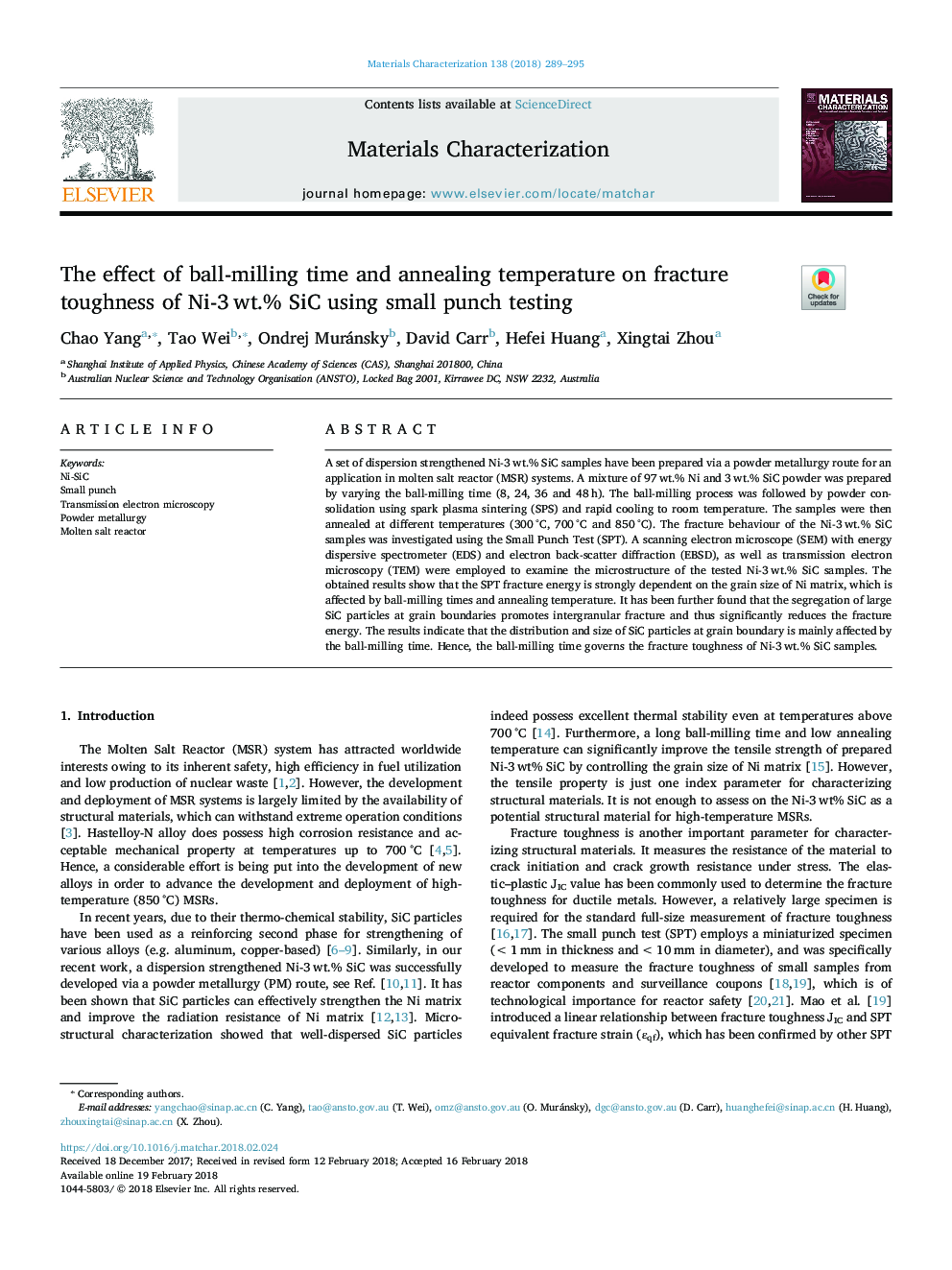| Article ID | Journal | Published Year | Pages | File Type |
|---|---|---|---|---|
| 7969387 | Materials Characterization | 2018 | 7 Pages |
Abstract
A set of dispersion strengthened Ni-3â¯wt.% SiC samples have been prepared via a powder metallurgy route for an application in molten salt reactor (MSR) systems. A mixture of 97â¯wt.% Ni and 3â¯wt.% SiC powder was prepared by varying the ball-milling time (8, 24, 36 and 48â¯h). The ball-milling process was followed by powder consolidation using spark plasma sintering (SPS) and rapid cooling to room temperature. The samples were then annealed at different temperatures (300â¯Â°C, 700â¯Â°C and 850â¯Â°C). The fracture behaviour of the Ni-3â¯wt.% SiC samples was investigated using the Small Punch Test (SPT). A scanning electron microscope (SEM) with energy dispersive spectrometer (EDS) and electron back-scatter diffraction (EBSD), as well as transmission electron microscopy (TEM) were employed to examine the microstructure of the tested Ni-3â¯wt.% SiC samples. The obtained results show that the SPT fracture energy is strongly dependent on the grain size of Ni matrix, which is affected by ball-milling times and annealing temperature. It has been further found that the segregation of large SiC particles at grain boundaries promotes intergranular fracture and thus significantly reduces the fracture energy. The results indicate that the distribution and size of SiC particles at grain boundary is mainly affected by the ball-milling time. Hence, the ball-milling time governs the fracture toughness of Ni-3â¯wt.% SiC samples.
Related Topics
Physical Sciences and Engineering
Materials Science
Materials Science (General)
Authors
Chao Yang, Tao Wei, Ondrej Muránsky, David Carr, Hefei Huang, Xingtai Zhou,
